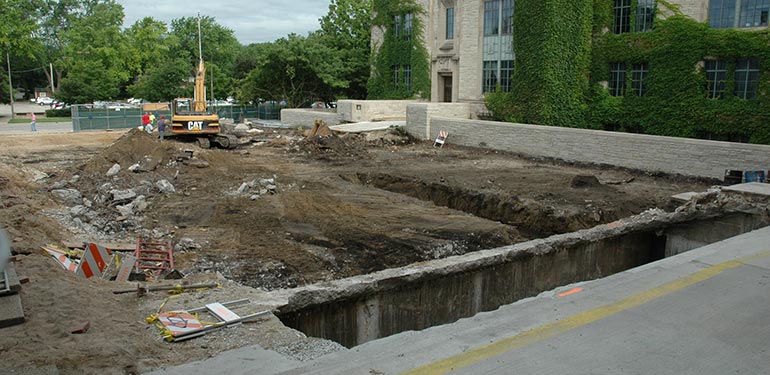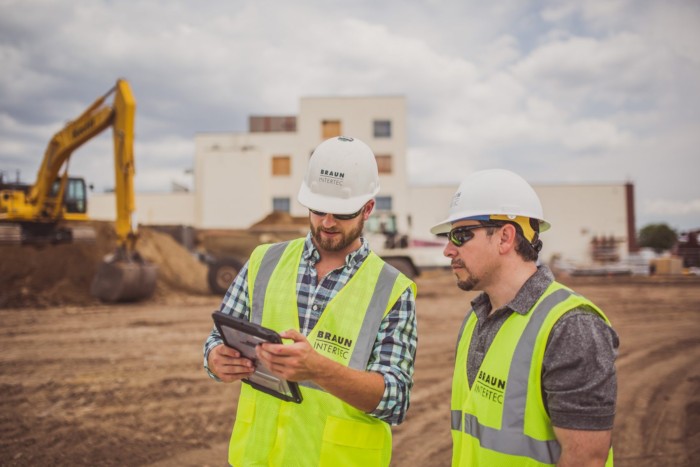Why the Geotechnical Industry Demands Cutting-edge Solutions Currently
Wiki Article
A Thorough Take A Look At the Scope of Technique for Geotechnical Engineers and Their Effect On Job Feasibility and Threat Mitigation
The range of method for geotechnical engineers encompasses a variety of essential obligations that directly influence project feasibility and threat management. From performing comprehensive site investigations to evaluating subsurface problems, their know-how is crucial fit structure design and building approaches. As projects significantly encounter intricate geological obstacles, comprehending the nuanced duty of these professionals comes to be critical for ensuring successful end results. The effects of their work expand past plain analysis; they can significantly change the trajectory of a project. What certain strategies do geotechnical designers employ to navigate these complexities properly?Duties and Duties of Geotechnical Engineers
Geotechnical designers play an essential function in the structure of building projects, making certain that frameworks are developed on solid ground. Their duties incorporate an array of activities essential for assessing dirt and rock residential or commercial properties, which straight affect task feasibility and safety and security. Geotechnical designers conduct website examinations to gather crucial data regarding subsurface problems. This includes drilling boreholes, sampling dirt and rock, and carrying out in-situ tests to figure out product attributes.
Collaboration is likewise a key facet of their function; they work carefully with civil designers, designers, and ecological experts to guarantee that geotechnical considerations are integrated right into overall project planning. Inevitably, the know-how of geotechnical engineers is vital in promoting the security, sustainability, and stability of construction ventures.
Trick Areas of Geotechnical Analysis
Dirt samples and geological surveys are foundational aspects in the vital areas of geotechnical evaluation. These tasks offer important information concerning the physical and chemical residential or commercial properties of the subsurface materials, making it possible for engineers to evaluate site conditions properly. The evaluation usually includes dirt classification, compaction, shear toughness, and leaks in the structure, every one of which are necessary for comprehending the behavior of soils under various loading conditions.One more considerable area of focus is incline security analysis, which examines the risk of landslides or dirt disintegration. This includes examining the geometry of inclines, soil types, and groundwater conditions. Website characterization is additionally vital, as it entails a detailed investigation of the website's history, consisting of previous construction, contamination, and all-natural threats.
In addition, groundwater evaluation plays an important duty in geotechnical assessment, influencing both the design and building phases. Recognizing the groundwater table, circulation direction, and prospective fluctuations is crucial for reliable foundation design and stormwater monitoring.
Together, these key areas of geotechnical evaluation develop a comprehensive structure that informs decision-making procedures, making certain safe and sustainable design practices while minimizing possible risks connected with subsurface conditions.
Effect on Job Feasibility
The usefulness of a building project pivots considerably on the insights gained from geotechnical investigations. These examinations give essential information regarding dirt homes, groundwater problems, and subsurface characteristics, which are important for establishing the suitability of a website for construction. By evaluating variables such as dirt bearing capability, negotiation capacity, and slope security, geotechnical designers play a crucial duty in examining whether a project can continue as prepared or if alterations are needed.Additionally, the results of geotechnical researches directly affect task layout and building and construction methodologies. Accurate geotechnical data enables educated decision-making, ensuring that structural designs fit site-specific problems and adhere to regulative requirements. This process assists in enhancing resource allowance, thereby decreasing unanticipated delays and price overruns.
Furthermore, a complete geotechnical analysis enhances the overall feasibility of a task by recognizing prospective difficulties early in the preparation stage. By attending to these challenges proactively, stakeholders can boost the task's likelihood of success, ensuring that it satisfies both economic and practical goals. In recap, the payments of geotechnical engineers are integral to establishing task feasibility, thereby laying the foundation for reliable job execution.
Threat Reduction Methods
While building tasks naturally entail numerous uncertainties, executing reliable threat mitigation methods can dramatically lessen prospective problems arising from geotechnical factors. Geotechnical designers play a crucial role in recognizing, analyzing, and attending to threats related to subsurface conditions, ensuring that projects proceed efficiently and remain within budget.One key method involves comprehensive site examinations, which include dirt sampling, in-situ screening, and laboratory analysis. These analyses give important data on soil composition, stamina, and actions, enabling engineers to make structures and earthworks that are both efficient and safe. Furthermore, using sophisticated modeling strategies, such as finite aspect analysis, allows designers to anticipate how dirt and architectural interactions may evolve under different loading conditions.
Another reliable reduction approach is the execution of ideal design alterations, such as making use of support strategies or embracing alternate construction methods, which can improve stability and minimize susceptability to geotechnical problems. Additionally, continual geotechnical industry monitoring of website conditions during construction can promote timely treatments, thus minimizing the probability of unpredicted difficulties.
Situation Studies and Real-World Applications
Study supply valuable understandings into the functional applications of geotechnical engineering concepts and highlight the efficiency of threat mitigation strategies in real-world scenarios. One noteworthy instance is the construction of the Centuries Dome in London, where ingenious ground therapy methods were applied to deal with challenging soil problems. By employing deep cement mixing and dirt stablizing techniques, designers successfully created a secure foundation that mitigated prospective negotiation threats, guaranteeing the job's feasibility.An additional instance is the stablizing of the hillside for the new highway in The golden state, where considerable incline evaluation and monitoring were utilized. Geotechnical engineers made use of maintaining walls and water drainage systems to handle groundwater, significantly minimizing the threat of landslides. This proactive approach not just protected the integrity of the highway but likewise enhanced public security.
Additionally, the development of a major airport incurable showed the importance of thorough site investigations. geotech engineer. Geotechnical engineers recognized troublesome soil layers and suggested particular foundation layouts, resulting in a successful project completion with decreased hold-ups. These case researches highlight the critical duty that geotechnical designers play in evaluating dangers and carrying out effective remedies, thus improving project usefulness and total success
Final Thought

By analyzing variables such as dirt bearing capability, settlement potential, and incline security, geotechnical designers play a crucial role in reviewing whether a task can proceed as planned or if adjustments are needed.
In recap, the contributions of geotechnical engineers are important to developing task feasibility, thus laying the groundwork for reliable project execution.
Geotechnical designers determined problematic soil layers and suggested specific structure layouts, leading to an effective project conclusion with reduced delays. civil consulting engineers. These instance researches emphasize the vital function that geotechnical designers play in assessing threats and carrying out reliable remedies, therefore boosting job expediency and general success
Via efficient danger mitigation techniques and the application of advanced modeling methods, geotechnical designers enhance task results and reduce hazards associated to dirt and groundwater problems.
Report this wiki page